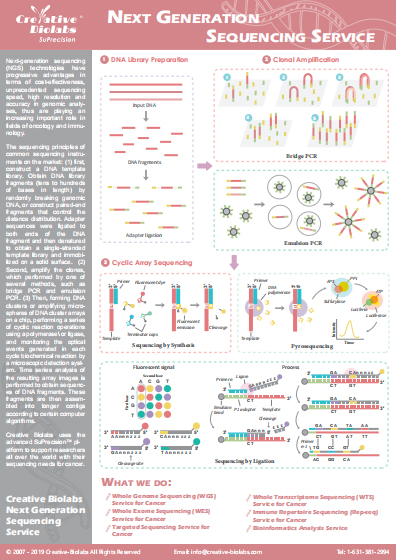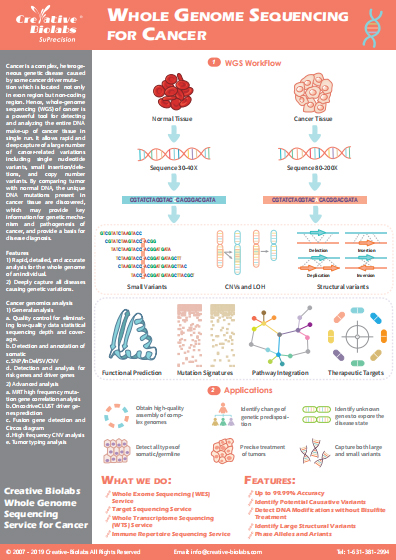
Formalin-Fixed Paraffin-Embedded (FFPE) Tissue RNA Sequencing Service
Clinical samples, especially oncology biopsies, are typically formalin-fixed paraffin-embedded (FFPE). FFPE tissues are valuable materials for genomic, transcriptomic, epigenetic, and proteomic analyses to demonstrate the state of disease tissues. However, the low-quality and low-yields RNA extracted from FFPE tissues is an obstacle for exploring the pathogenesis of disease by transcriptome analyses.
Creative Biolabs is a world-leading service provider for whole transcriptome sequencing and has accomplished several challenging transcriptome sequencing projects. We have accumulated rich experience in RNA sequencing for FFPE tissue. To achieve accurate and reliable sequencing data, our excellent scientists have optimized sequencing workflow from RNA extraction to data analysis.
Introduction of RNA Sequencing for FFPE Tissue
FFPE technique is the most commonly used method for biopsy and autopsy in clinics. However, the process of tissue fixing and paraffin embedding severely affects the quality and integrity of RNA, thereby influencing the downstream RNA related analysis. In order to obtain high-quality RNA from FFPE tissues, the sample preparation methodologies have been optimized. For example, the FFPE tissues are firstly removed paraffin and rehydrated, then RNA biomolecules are extracted from the preprocessed tissues, thus increasing the yields of nucleic acids and minimizing the degradation of nucleic acids. Furthermore, to better assess input RNA quality, the DV200 metric is often used as an indicator of successful library preparation and downstream sequencing results. Most currently used NGS library preparation methods for degraded samples require DV200 >30%. During sequencing and data analysis process, the Illumina platform has been used to obtain average RNA-seq reads of more than 100 million per sample, and the RNAseq data is thoroughly quality-controlled at multiple stages at the level of raw, alignment, and expression. At last, the RNA-seq data reveals a comprehensive understanding of gene expression profiles involved in disease processes.

Our Services
Our professional scientists are committed to offering one-stop solutions for RNA sequencing for FFPE tissue. We tailor the optimal workflow of RNA sequencing and data analysis for FFPE tissue according to the special purpose of clients’ projects. Our clients always obtain the most satisfying feedback, from RNA preparations from FFPE sample to RNA-seq data analysis. Our service portfolio includes but not limited:
- Small RNA sequencing and analysis
- mRNA sequencing and analysis
- Long noncoding RNAs (lncRNAs) sequencing and analysis
Highlight
- High quality and high yields RNA extraction from FFPE sample
- Optimal protocol for RNA sequencing and analysis for FFPE sample
- Reliable and accurate RNA-seq data delivery
With the years of experience in RNA sequencing and analysis, Creative Biolabs provides superior RNA sequencing and analysis services for FFPE tissue. We constantly challenge ourselves to deliver reliable RNA sequencing data to promote your clinical projects and academic researches. Please contact us for more information and a detailed quote.
Q&As
Resources
Infographics
Podcast
- mRNA Sequencing
- Small RNA Sequencing
- CircRNA Sequencing
- LncRNA Sequencing
- Exosomal RNA Sequencing
- Ultra Low Input RNA Sequencing




